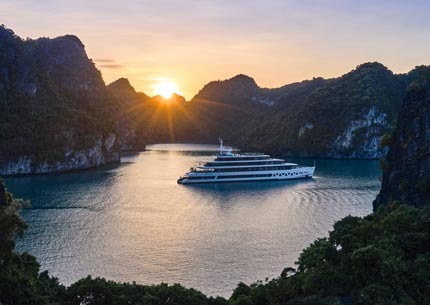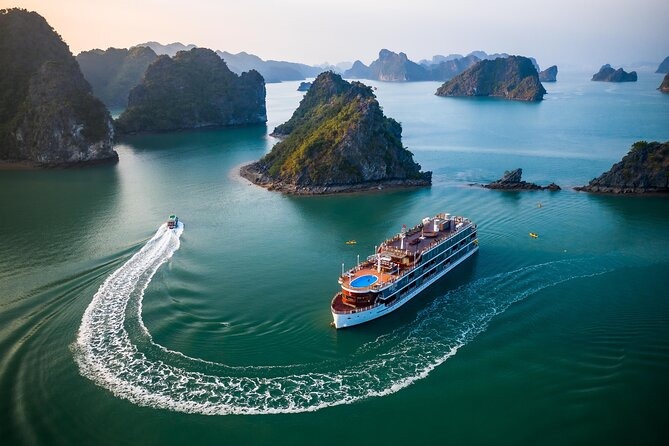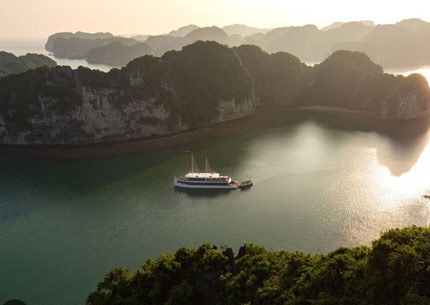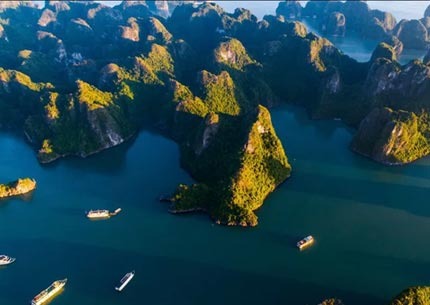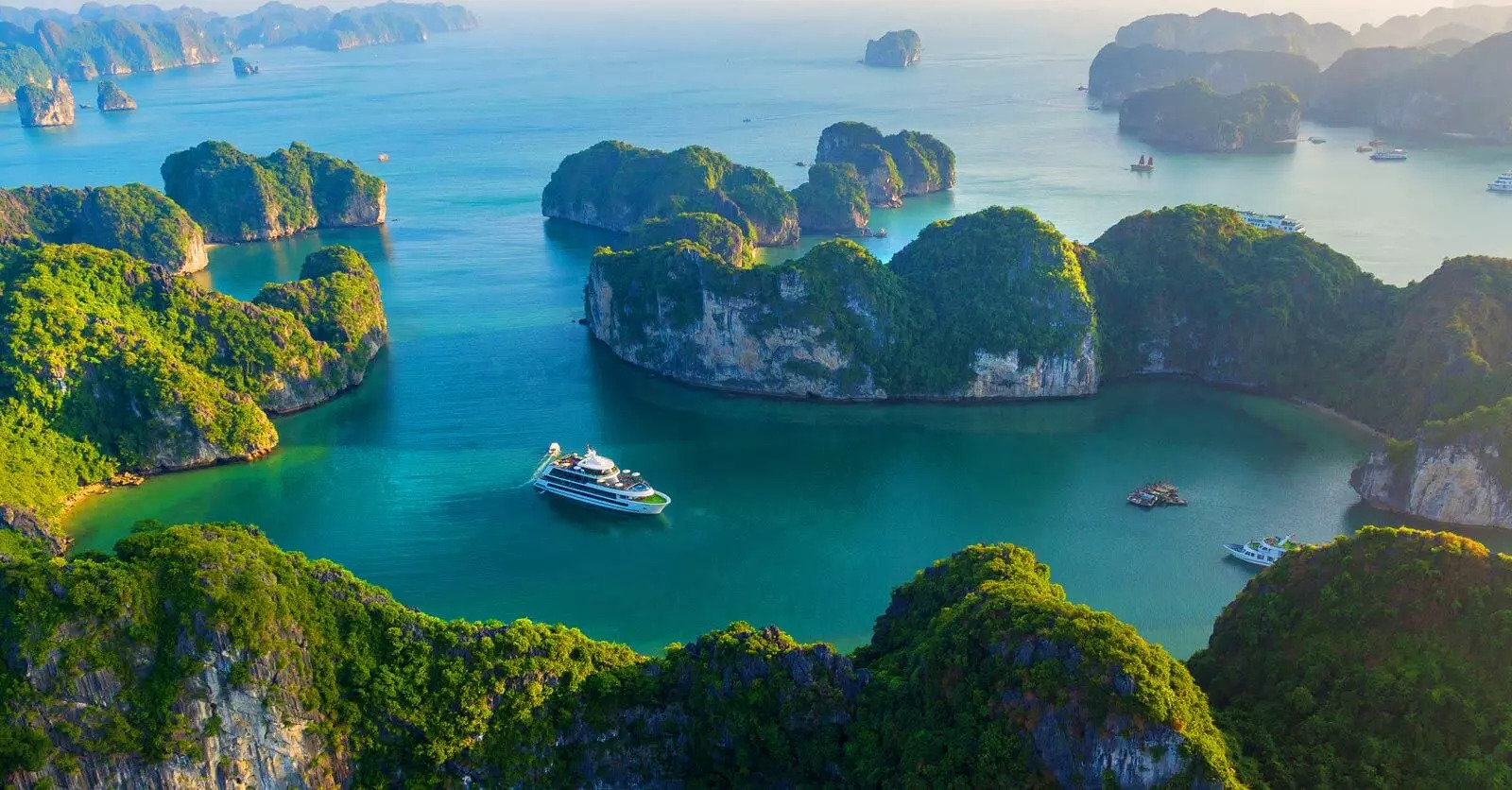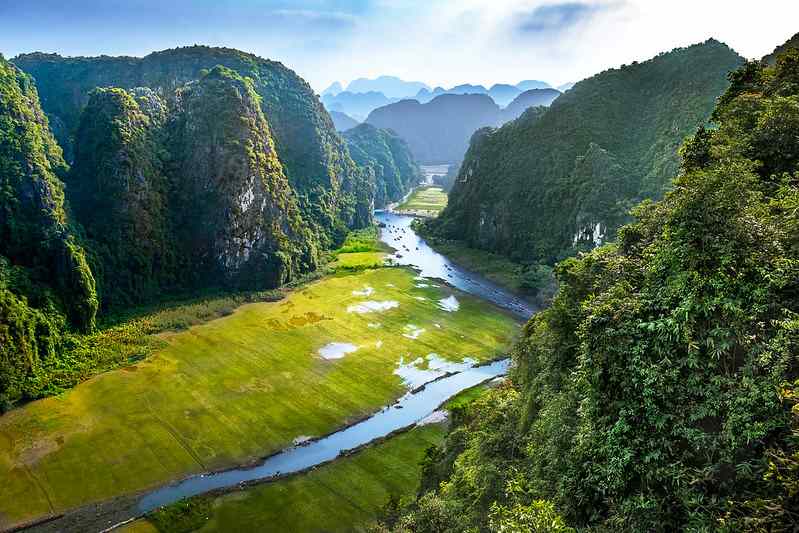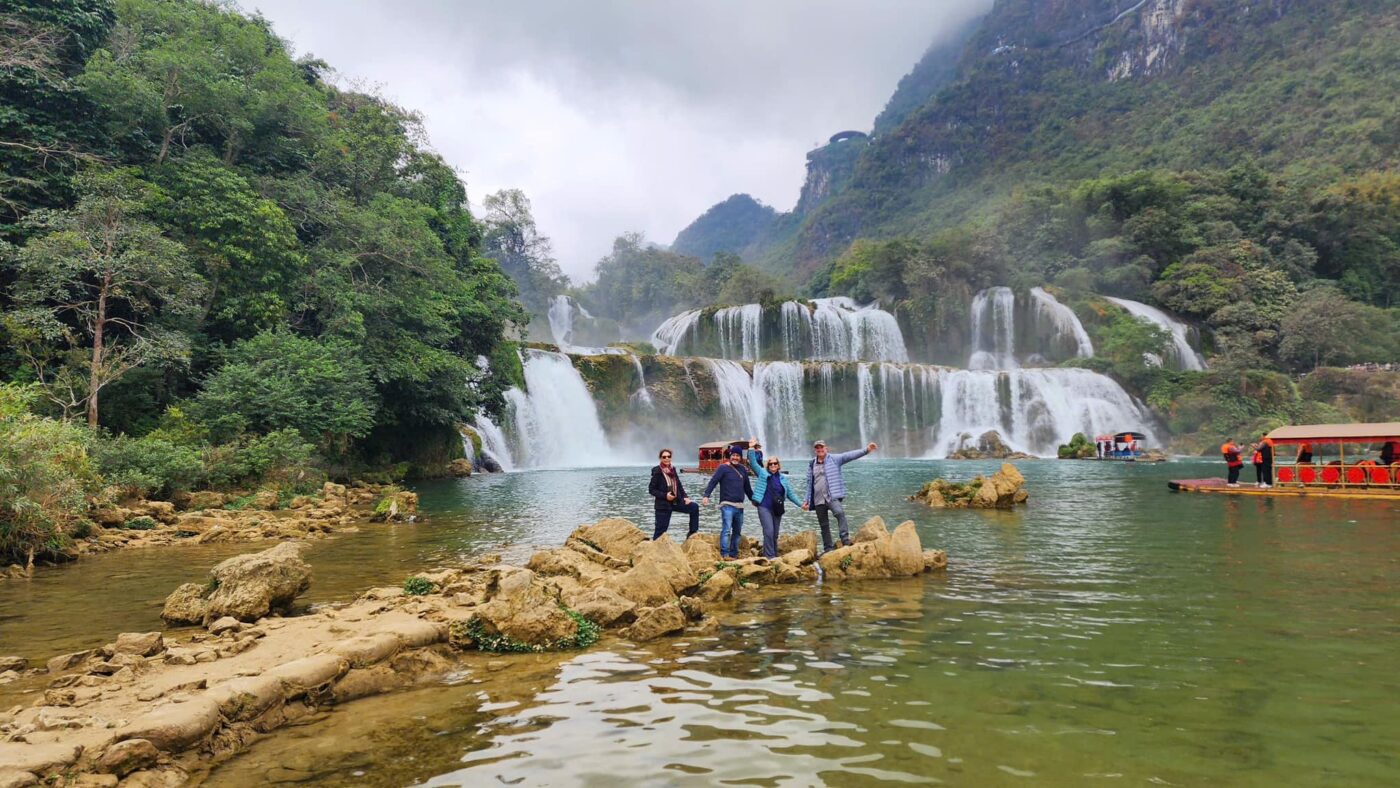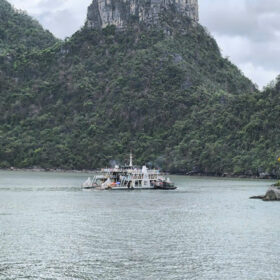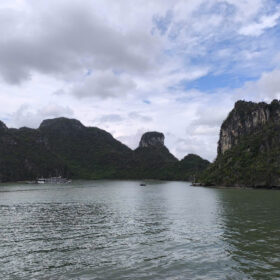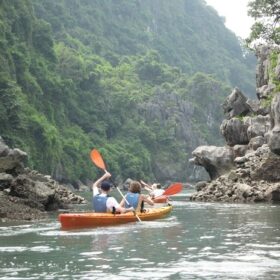Ha Giang Typhoon Season 2025-2026: 15 Essential Facts Travelers Must Know
Planning a trip to Vietnam’s northern frontier? Discover the complete guide to Ha Giang’s weather patterns, safety measures, and travel recommendations for the 2025-2026 typhoon season.
Updated March 2025 | Expert weather insights | Comprehensive travel guide
Understanding Ha Giang’s Climate and Geography in 2025-2026
Ha Giang, Vietnam’s northernmost province bordering China, captivates travelers with its dramatic limestone karsts, winding mountain passes, and vibrant ethnic minority cultures. This remote region’s unique topography creates distinct weather patterns that differ significantly from other parts of Vietnam, including coastal areas like Halong Bay.
The province sits at elevations ranging from 800-1,600 meters above sea level, with some peaks reaching over 2,000 meters. This mountainous terrain influences how typhoons impact the region, as Ha Giang doesn’t face direct typhoon hits but rather experiences the secondary effects of these weather systems.
In 2025, meteorologists from Vietnam’s National Center for Hydro-Meteorological Forecasting project slight shifts in traditional weather patterns due to ongoing climate change factors, making this information particularly crucial for travelers planning their northern Vietnam adventure.
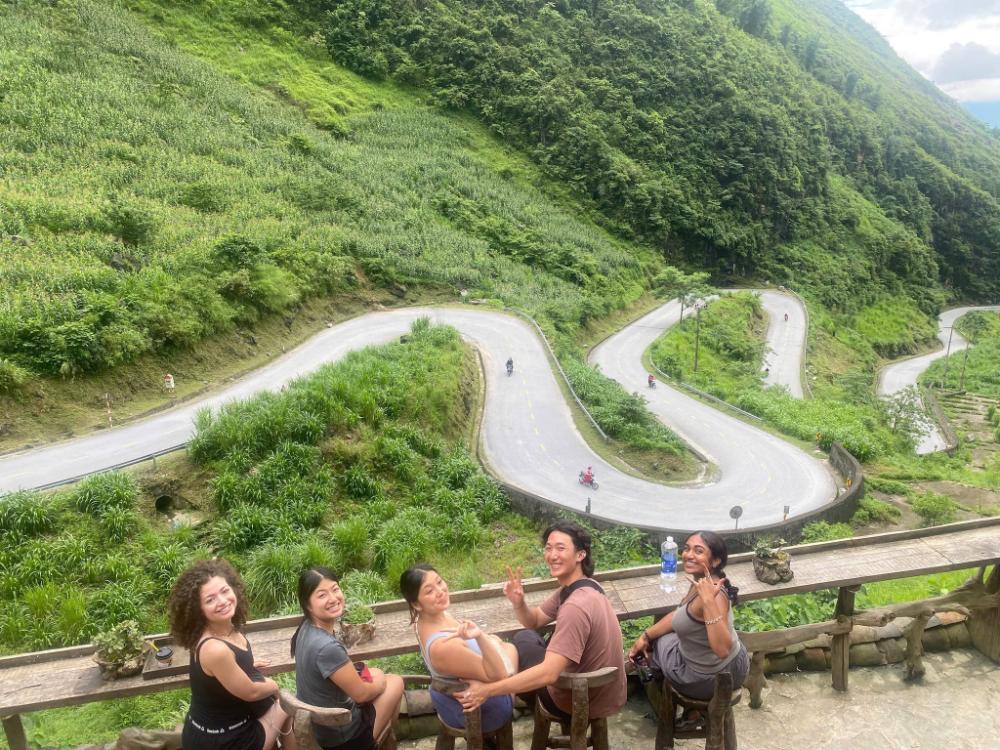
Ha Giang’s Climate Zones and Seasonal Variations
Ha Giang’s climate divides into four distinct geographical zones:
- Northeastern zone (Quản Bạ, Yên Minh): Average annual temperature of 21°C with rainfall averaging 2,400mm annually
- High mountain zone (Đồng Văn, Mèo Vạc): Cooler temperatures around 16-18°C with less rainfall (1,700mm annually)
- Western zone (Hoàng Su Phì, Xín Mần): Warmer and more humid, with temperatures averaging 22-24°C
- Southern zone (Ha Giang City): Moderate climate with average temperatures of 22-23°C
Understanding these microclimates helps travelers prepare appropriately, especially when planning a multi-day journey like the famous Ha Giang Loop.
Ha Giang Typhoon Season 2025: Precise Timeline and Predictions
Ha Giang’s typhoon season generally spans from May through September, coinciding with Vietnam’s broader monsoon period. However, for 2025, meteorological data indicates some noteworthy adjustments to this pattern:
| Month | Rainfall Prediction | Typhoon Risk | Travel Recommendation
|
|---|---|---|---|
| May | 180-220mm (15% increase from 2024) | Low-Moderate | Good with preparation |
| June | 250-290mm | Moderate | Feasible with caution |
| July | 320-380mm | High | Consider alternatives |
| August | 340-400mm | Very High | Not recommended |
| September | 200-250mm | Moderate-High | Late month better |
According to the Vietnam Institute of Meteorology, Hydrology and Climate Change, the 2025 typhoon season is expected to bring approximately 11-13 tropical storms to Vietnam’s territorial waters, with 5-7 directly affecting the mainland. While Ha Giang won’t face direct typhoon impacts, the secondary effects—including sustained heavy rainfall—will be most pronounced in July and August.
Peak Typhoon Risk Period: July 15 – August 25, 2025
The most concerning period for Ha Giang travelers in 2025 will be the six-week window from mid-July through late August. During this time:
- Daily rainfall may exceed 60-80mm during storm systems
- Flash flood risks increase by 35% in low-lying areas
- Landslide probability rises to 40-50% along mountain roads, particularly at Mã Pí Lèng Pass and sections of the QL4C highway
Expert Insight: “The 2025 monsoon pattern shows a notable intensification during the peak weeks compared to previous years, with rainfall concentration expected to be 22% higher than the 2020-2024 average,” notes Dr. Nguyen Van Hai, Senior Meteorologist at Vietnam’s Weather Forecasting Center.
Comparing Ha Giang’s Typhoon Season with Other Vietnamese Destinations
Understanding how Ha Giang’s typhoon season compares to other popular Vietnamese destinations can help travelers plan a comprehensive itinerary that maximizes good weather across regions.
| Destination | Typhoon Season | Peak Impact Months | 2025 Risk Assessment
|
|---|---|---|---|
| Ha Giang | May-September | July-August | Moderate-High |
| Halong Bay | June-October | August-September | High |
| Sapa | June-September | July-August | Moderate |
| Hanoi | July-October | August-September | Moderate |
| Hoi An | September-November | October | Very High |
| Ho Chi Minh City | July-November | October | Low-Moderate |
This comparison highlights an interesting opportunity for travelers: combining Ha Giang with Halong Bay is ideal during May-June or late September, when both destinations offer relatively manageable weather conditions.
Safety Considerations for Ha Giang Travel During Typhoon Season 2025-2026
Traveling to Ha Giang during typhoon season requires thorough preparation and risk awareness. Here’s what you need to know to stay safe:
Road Conditions and Transportation Risks
The iconic Ha Giang Loop—a 350km motorcycle circuit through the region’s most spectacular landscapes—becomes significantly more hazardous during typhoon season. The 2025 infrastructure assessment reveals:
- QL4C Highway sections: 12 identified high-risk zones for landslides, particularly between Km 115-138
- Mã Pí Lèng Pass: Reduced visibility (often below 50m) during heavy rainfall
- Đồng Văn to Mèo Vạc road: Subject to flash flooding at 3 key points where mountain streams cross the highway
Safety Tip: For motorcycle travelers, the Vietnam Highway Authority recommends vehicles with at least 150cc engines for the challenging wet-season roads. Alternatively, consider hiring a local driver with a 4WD vehicle.
Emergency Services and Communication
Ha Giang’s remote nature means emergency services have limitations, especially during severe weather:
- Cell service coverage is approximately 82% across the loop but drops to 65% during heavy storms
- Average emergency response time: 45-90 minutes in accessible areas, potentially longer in remote sections
- Medical facilities with advanced care are limited to Ha Giang City Provincial Hospital
Essential Preparation: Register your travel plans with your country’s embassy in Vietnam and download offline maps of the region. The “Zalo” messaging app is widely used in Vietnam and functions better than some international apps in areas with weak signals.
The Hidden Benefits of Visiting During Typhoon Season
Despite the challenges, visiting Ha Giang during typhoon season offers several unique advantages that many travelers overlook:
Breathtaking Scenery Transformation
The increased rainfall creates a visual spectacle across the landscape:
- Rice terraces reach peak vibrancy with electric green hues in July and golden colors by September
- Waterfalls throughout the region, particularly the Tiên Falls in Quản Bạ district, reach maximum flow (increased by 300% compared to dry season)
- Morning fog creates mystical scenes across the karst mountains, ideal for photography between 5:30-8:00 AM
Authentic Cultural Experiences With Fewer Crowds
Tourism statistics from the Ha Giang Provincial Tourism Department show visitor numbers decrease by approximately 60% during July-August compared to peak season. This reduction offers:
- More meaningful interactions with local ethnic groups including the Hmong, Dao, and Tày communities
- Better availability at authentic homestays (average occupancy drops to 40% versus 92% in October)
- Opportunity to witness daily life adaptations to the rainy season, including traditional farming techniques
Cultural Insight: Many ethnic minority groups in Ha Giang perform rainmaking and rain-stopping ceremonies during this season. In 2025, the Hmong “Rain Worship Festival” is scheduled for July 8-10 in Đồng Văn district, offering a rarely-witnessed cultural experience.
Essential Packing List for Ha Giang Typhoon Season 2025-2026
Preparing appropriately for Ha Giang’s typhoon season requires specialized gear beyond typical travel essentials:
Weather Protection Gear
- High-performance rain jacket with minimum 10,000mm waterproof rating and sealed seams (recommended: North Face Dryzzle or Columbia OutDry)
- Quick-dry hiking pants with zippered vents (avoid cotton materials)
- Waterproof hiking boots with aggressive tread pattern and ankle support for slippery terrain
- Waterproof phone case with IPX8 rating and lanyard attachment
Safety Equipment
- Personal locator beacon or satellite messenger (such as Garmin inReach) for emergency communication in areas without cell service
- First aid kit with additional supplies for treating cuts, sprains, and waterborne illness
- Microfiber towels (at least 2) that dry quickly between uses
- Headlamp with minimum 300 lumens and red light mode for power outages, which occur 30% more frequently during storm season
Traveler Tip: “During my July 2024 trip, having waterproof dry bags made all the difference. I recommend at least a 15L bag for electronics and documents, plus a larger 30L version for clothing,” shares Emma Chen, travel blogger and Ha Giang enthusiast.
Alternative Times to Visit Ha Giang
If the typhoon season risks outweigh the benefits for your travel style, consider these alternative periods that showcase Ha Giang’s diverse seasonal beauty:
October-November : The Photographer’s Dream
The post-typhoon period offers extraordinary advantages:
- Crystal-clear visibility extending over 30km on good days
- Harvest scenes across rice terraces with golden hues
- Comfortable temperatures ranging from 15-22°C
- Buckwheat flower fields in full bloom across Đồng Văn plateau, creating purple carpets against limestone backdrops
December -January: The Winter Experience
Winter brings a completely different atmosphere to Ha Giang:
- Occasional light frost and potential snow at higher elevations (above 1,500m)
- Temperatures ranging from 5-15°C, requiring warm layers
- Stunning clear skies with exceptional stargazing opportunities (average of 8 clear nights per month)
- Traditional Tết (Lunar New Year) preparations in late January, with local markets at their most vibrant
If you’re considering exploring Vietnam’s stunning northern region while avoiding the challenges of typhoon season, a 3-day luxury cruise through Halong Bay and Lan Ha Bay offers an excellent alternative during these months.
Local Festivals and Events During Typhoon Season
Despite the challenging weather, typhoon season coincides with several significant cultural events that provide unique insights into local traditions:
Lunar Calendar Festivals (May-September )
- Lồng Tồng Festival (May 12-14, 2025): A planting ceremony of the Tày ethnic group in Hà Giang City, featuring rituals for good harvests and protection from storms
- Gầu Tào Festival (July 3-5, 2025): An important Hmong celebration in Đồng Văn district focusing on community bonding and prosperity
- Ancestral Worship Days: Various ethnic groups hold ceremonies throughout the rainy season to pray for protection from natural disasters
Agricultural Celebrations
- “First Rain” Ceremony (Early May 2025): Dao communities in Quản Bạ district perform traditional rituals to welcome the first monsoon rains
- Corn Harvest Festival (Late September 2025): Marks the end of typhoon season and celebrates successful harvests despite weather challenges
Cultural Note: Many of these events follow the lunar calendar and may adjust their dates based on local conditions. Always confirm with local tourism offices before planning your trip around specific festivals.
Accommodation Recommendations for Typhoon Season Safety
Choosing appropriate accommodation becomes particularly important during Ha Giang’s typhoon season. Consider these options based on 2025 infrastructure assessments:
Secure Storm-Ready Options
- Hmong Homestay Collective (Đồng Văn): Traditional homes built into hillsides with reinforced structures and emergency generators, offering authentic experiences with added safety
- Phoenix Mountain Hotel (Ha Giang City): Modern 4-star facility with elevated location above flood zones and comprehensive backup systems
- H’Mong Lodge (Mèo Vạc): Sturdy construction using traditional techniques combined with modern safety standards
Locations to Avoid During Peak Typhoon Months
- Accommodations along the Nho Quế River banks (flood risk)
- Homestays in Yên Minh district’s low-lying areas (identified as high-risk zones in 2024 geological surveys)
- Temporary or newly constructed facilities without proper certification
Booking Tip: During typhoon season, select accommodations offering flexible cancellation policies. Many reputable providers in Ha Giang now offer “weather guarantee” options that allow free rebooking if severe weather advisories are issued.
Transportation Strategies During Ha Giang’s Typhoon Season
Navigating Ha Giang during typhoon season requires strategic planning and flexibility:
Motorcycle Travel Considerations
The iconic Ha Giang Loop motorcycle journey demands extra precautions during the rainy season:
- Recommended motorcycles: Semi-automatic or manual 150-175cc models with adequate ground clearance (Honda XR150L, Yamaha Exciter)
- Rental considerations: Verify tire condition (minimum 70% tread remaining) and brake quality
- Route modifications: The standard 3-4 day loop may require 5-6 days during typhoon season to accommodate weather delays
Expert Advice: “Schedule your daily rides to finish before 2 PM when possible. Afternoon storms are most common between 3-7 PM, and you don’t want to be caught on mountain passes during these hours,” advises Tran Van Minh, veteran Ha Giang motorcycle guide.
Alternative Transportation Options
For those uncomfortable with motorcycling in wet conditions:
- Private jeep tours: Increasingly popular option providing greater safety margins, though at higher cost (approximately $80-100 USD per day)
- Shared minivans: Connect major towns on fixed schedules, though services may be delayed during heavy rainfall
- Local guides with vehicles: Offer the most flexibility to adapt to weather conditions (average rate: $70-90 USD daily)
Real-Time Weather Monitoring Resources
Staying informed about weather conditions is crucial during Ha Giang’s typhoon season. These resources provide reliable information for 2025:
Digital Resources
- Vietnam Meteorological Administration App: Newly updated for 2025 with English interface and Ha Giang-specific forecasts
- Windy.com: Provides detailed wind and precipitation models particularly useful for mountain regions
- Ha Giang Tourism Weather Alert System: SMS-based service available to international travelers (register at hagiangtourism.gov.vn)
Local Information Sources
- Provincial Meteorological Stations: Located in Ha Giang City, Đồng Văn, and Hoàng Su Phì, providing twice-daily bulletins
- Accommodation Weather Boards: Most reputable hotels and homestays maintain updated road condition information
- Motorcycle Rental Shops: Often have WhatsApp groups sharing real-time road reports from returning riders
Digital Tip: Download the weather resources before arriving, as connectivity may be limited in remote areas.
Environmental Considerations During Typhoon Season
The increased rainfall during typhoon season creates both challenges and opportunities for environmental awareness:
Ecological Impact Awareness
- Heavy rains wash plastic waste from upland areas into waterways, making responsible waste management especially important
- Erosion along trekking paths intensifies during this season, so staying on designated trails becomes crucial
- Wildlife sightings (particularly birds and amphibians) increase significantly, offering unique observation opportunities
Responsible Travel Practices
- Use biodegradable soap and shampoo products as water runoff increases during this season
- Support businesses employing flood-mitigation strategies and proper waste management
- Consider contributing to local reforestation efforts, which help reduce landslide risks
Environmental Note: The Ha Giang Provincial Administration initiated the “Green Monsoon” program in 2024, focusing on typhoon season waste management. Travelers can participate through organized clean-up events held weekly in major towns.
Combining Ha Giang with Other Northern Vietnam Destinations
Creating a typhoon-smart itinerary might involve combining Ha Giang with other destinations based on optimal weather conditions:
Complementary Destinations During Typhoon Season
- May-June 2025: Combine Ha Giang with Halong Bay cruises before peak typhoon season affects the coast
- July-August 2025: Consider urban exploration in Hanoi paired with brief visits to Ha Giang’s lower-risk southern districts
- September 2025: Excellent time to combine late-season Ha Giang with luxury cruising in Lan Ha Bay as coastal typhoon risks begin to decrease
Sample 10-Day Northern Vietnam Typhoon-Season Itinerary
- Days 1-2: Hanoi exploration (minimal weather disruption)
- Days 3-5: 2-day Halong Bay cruise (monitor weather forecasts closely)
- Days6-9: Ha Giang Loop (shortened version focusing on more secure routes)
- Day 10: Return to Hanoi via Tuyên Quang province (alternative scenic route less affected by weather)
Traveler Experiences: Ha Giang Typhoon Season Insights
Learning from recent travelers’ experiences provides valuable context for your 2025 journey:
Success Stories
“Visiting during June 2024 meant occasional heavy afternoon downpours, but mornings were often clear. The landscapes were incredibly lush, and the dramatic clouds added an otherworldly quality to photographs. Having waterproof everything was essential.” – Marcus Chen, Adventure Photographer
“As a solo female traveler in August 2024, I joined a guided jeep tour instead of motorcycling. This proved invaluable when our guide rerouted us away from a landslide area before official notices were even posted.” – Sarah Johnson, Travel Blogger
Challenges and Solutions
“Our original 4-day motorcycle itinerary became 6 days due to a 24-hour period of constant rain. Building this flexibility into our schedule made all the difference between frustration and simply enjoying extra time in a mountain homestay.” – James and Maria Rodriguez, Motorcycle Enthusiasts
Final Recommendations: Go or No-Go for Ha Giang Typhoon Season?
After analyzing meteorological data, infrastructure assessments, and traveler experiences, here are our definitive recommendations for Ha Giang travel during the 2025 typhoon season:
Favorable Periods Within Typhoon Season
- May 1-June 15: Early typhoon season with moderate rainfall but significantly reduced risks
- September 15-30: Late season with decreasing precipitation and beautiful pre-harvest landscapes
Periods to Approach with Extreme Caution
- July 15-August 25: Peak typhoon impact period with highest rainfall and landslide risks
- Specific alert dates: Be particularly vigilant during full moon periods (July 21, August 19) when tidal influences can intensify rainfall patterns
Traveler-Type Recommendations
- Adventure travelers with flexible schedules: Can successfully navigate typhoon season with proper preparation
- Photography enthusiasts: May find the dramatic weather and lush landscapes worth the challenges
- Families with children or travelers with limited mobility: Should strongly consider alternative seasons
Conclusion: Embracing Ha Giang’s Typhoon Season with Knowledge and Respect
Ha Giang’s typhoon season presents both extraordinary challenges and unique rewards for the prepared traveler. The 2025 season, with its predicted patterns of intense but navigable weather systems, offers a glimpse into the raw power that has shaped this remarkable landscape over millennia.
With thorough preparation, flexible planning, and respect for local conditions, experiencing Ha Giang during this transformative season can provide some of the most authentic and memorable encounters with Vietnam’s northern frontier. The key lies in balancing adventure with safety, curiosity with caution.
Whether you choose to brave the rainy season or opt for the more predictable conditions of autumn and winter, Ha Giang’s timeless beauty and cultural richness await your discovery. And when the weather presents challenges in the mountains, remember that the tranquil waters of Halong Bay offer an equally magnificent alternative for experiencing northern Vietnam’s natural wonders.
About the Author: This comprehensive guide was prepared by the Halong Bay Lux Cruises weather and travel research team, combining meteorological data with on-the-ground expertise from local guides and recent traveler experiences. Last updated: March 2025.
- Hotline | WhatsApp: +84.978.358.422
- Phone | WhatsApp: +84.962.261.687
- Email: halongbayluxcruises@gmail.com
- vietnammarveltravel@gmail.com

